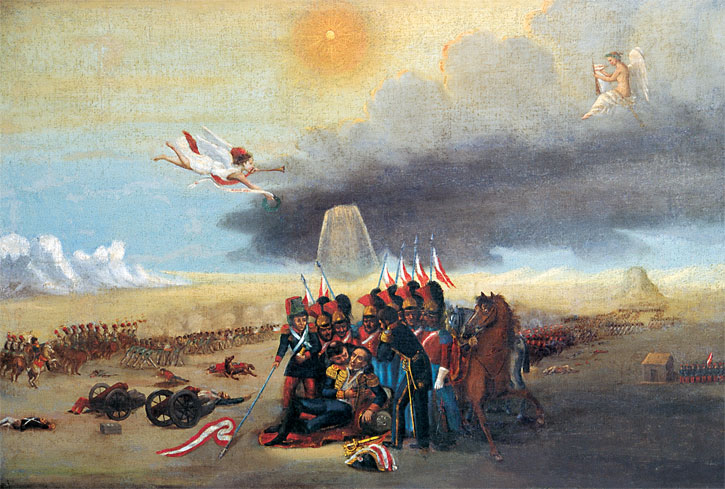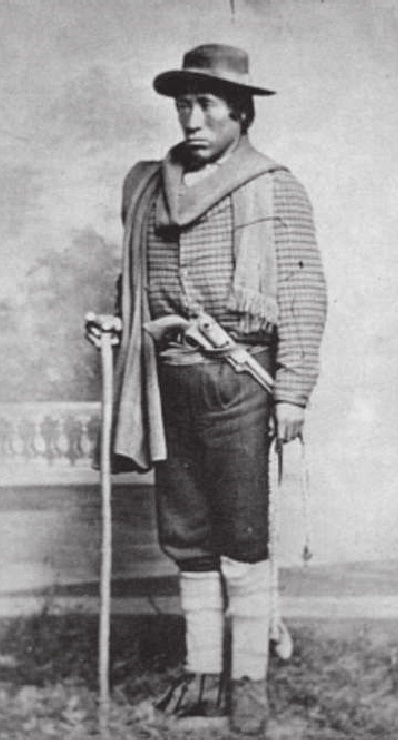|
Thujsa Jawira
Thujsa Jawira (Aymara ''thujsa'' smelling, ''jawira'' river, "smelling river", also spelled ''Tujsa Jahuira''), which upstream successively is named Ingenio and Río Grande and downstream is called Llink'i, is a river in the La Paz Department in Bolivia. It flows to Awallamaya Lake south of Lake Titicaca. Thujsa Jawira originates from the confluence of various streams in the Santiago de Machaca Municipality of the José Manuel Pando Province. Known as Ingenio (Spanish for "mill, plant") and Río Grande (Spanish for "big river") it runs to the little town of Santiago de Machaca in the northeast. Behind the town it receives the name Thujsa Jawira. In the San Andrés de Machaca Municipality of the Ingavi Province its direction is mainly to the north until the Jach'a Jawira ("big river", ''Río Jacha''), a left tributary, joins the river. Just before the confluence its name changes to Llink'i ("potter clay", ''Llinkhi, Llinqui''). The river turns to the east and then north again unti ... [...More Info...] [...Related Items...] OR: [Wikipedia] [Google] [Baidu] |
Aymara Language
Aymara (; also ) is an Aymaran language spoken by the Aymara people of the Bolivian Andes. It is one of only a handful of Native American languages with over one million speakers.The other native American languages with more than one million speakers are Nahuatl, Quechua languages, and Guaraní. Aymara, along with Spanish and Quechua, is an official language in Bolivia and Peru. It is also spoken, to a much lesser extent, by some communities in northern Chile, where it is a recognized minority language. Some linguists have claimed that Aymara is related to its more widely spoken neighbor, Quechua. That claim, however, is disputed. Although there are indeed similarities, like the nearly identical phonologies, the majority position among linguists today is that the similarities are better explained as areal features rising from prolonged cohabitation, rather than natural genealogical changes that would stem from a common protolanguage. Aymara is an agglutinating and, to a cert ... [...More Info...] [...Related Items...] OR: [Wikipedia] [Google] [Baidu] |
Bolivia
, image_flag = Bandera de Bolivia (Estado).svg , flag_alt = Horizontal tricolor (red, yellow, and green from top to bottom) with the coat of arms of Bolivia in the center , flag_alt2 = 7 × 7 square patchwork with the (top left to bottom right) diagonals forming colored stripes (green, blue, purple, red, orange, yellow, white, green, blue, purple, red, orange, yellow, from top right to bottom left) , other_symbol = , other_symbol_type = Dual flag: , image_coat = Escudo de Bolivia.svg , national_anthem = " National Anthem of Bolivia" , image_map = BOL orthographic.svg , map_width = 220px , alt_map = , image_map2 = , alt_map2 = , map_caption = , capital = La Paz Sucre , largest_city = , official_languages = Spanish , languages_type = Co-official languages , languages ... [...More Info...] [...Related Items...] OR: [Wikipedia] [Google] [Baidu] |
La Paz Department, Bolivia
The La Paz Department of Bolivia comprises with a 2012 census population of 2,706,359 inhabitants. It is situated at the western border of Bolivia, sharing Lake Titicaca with adjacent Peru. It contains the '' Cordillera Real'', which reaches altitudes of . Northeast of the Cordillera Real are the ''Yungas'', the steep eastern slopes of the Andes Mountains that make the transition to the Amazon River basin to the northeast. The capital of the department is the city of La Paz and is the administrative city and seat of government/national capital of Bolivia. Provinces The Department of La Paz is divided into 20 provinces (''provincias'') which are further subdivided into 85 municipalities (''municipios'') and - on the fourth level - into cantons. The provinces with their capitals are: Government The chief executive office of Bolivia's departments (since May 2010) is the Governor; before then, the office was called the Prefect, and until 2006 the prefect was appointed by ... [...More Info...] [...Related Items...] OR: [Wikipedia] [Google] [Baidu] |
Ingavi Province
Ingavi is a province in the La Paz Department in Bolivia. This is where the Battle of Ingavi occurred on November 18, 1841 and where the World Heritage Site of Tiwanaku is situated. During the presidency of Eliodoro Villazón the province was founded on December 16, 1909 with Viacha as its capital. Geography Ingavi lies on the southern shore of Lake Titicaca. The Chilla-Kimsa Chata mountain range traverses the province. Some of the highest mountains of the province are listed below: Subdivision Ingavi Province is divided into seven municipalities which are partly further subdivided into cantons. Population The people are predominantly indigenous citizens of Aymara descent. Tourist attractions Some of the tourist attractions of the municipalities are: Touri ... [...More Info...] [...Related Items...] OR: [Wikipedia] [Google] [Baidu] |
José Manuel Pando
José Manuel Inocencio Pando Solares (27 December 1849 – 17 June 1917) was a Bolivian soldier, politician and explorer. He was also the 25th President of Bolivia from 1899 to 1904. During his government, the Acre War (1899-1903) began, in which Bolivia clashed with Brazil. Early life Youth and studies Pando was born in the town of Luribay on December 27, 1848. His parents were Manuel Pando and Petrona Solares. He studied at the ''Colegio Seminario de La Paz'' and continued his studies at the Universidad Mayor de San Andrés (UMSA) where he studied medicine, but only reached the sixth year before he abandoned it for a career in politics. At the age of twenty-three, Pando fought alongside the people of La Paz to overthrow the government of Mariano Melgarejo on January 15, 1871, after which he was incorporated into the Bolivian Army. Military career After overthrowing Melgarejo, Bolivian President Agustín Morales appointed Pando as his personal aide-de-camp in 1871. P ... [...More Info...] [...Related Items...] OR: [Wikipedia] [Google] [Baidu] |
Santiago De Machaca Municipality
Santiago de Machaca is the first municipal section of the José Manuel Pando Province José Manuel Pando is a province in the La Paz Department in Bolivia. It was founded on April 22, 1986, during the presidency of Víctor Paz Estenssoro. The province was named after José Manuel Pando (1848-1917) who was the president of Bolivi ... in the La Paz Department, Bolivia. Its seat is Santiago de Machaca. See also * Llallawa * Misa Willk'i * Tatitu Qullu * Thujsa Jawira * Wari Kunka References *Instituto Nacional de Estadistica de Bolivia (INE) Municipalities of La Paz Department (Bolivia) {{LaPazBO-geo-stub ... [...More Info...] [...Related Items...] OR: [Wikipedia] [Google] [Baidu] |
Awallamaya Lake
__NOTOC__ Awallamaya (Aymara ''awalla'' the first one of two newborn girls, ''maya'' one, ''amaya'' merlon / dead boy / beloved or very dear son or daughter / lazy / dead / skinny or weak person,Ludovico Bertonio, Transcripción del vocabulario de la lengua aymara (Spanish-Aymara dictionary) hispanicized spelling ''Aguallamaya'') is a lake in Bolivia located in the La Paz Department, Ingavi Province, Jesús de Machaca Municipality, near the village Awallamaya. Its surface area is 96 km². See also * Chilla-Kimsa Chata mountain range The Chilla-Kimsa Chata mountain range (also spelled Kimsachata, Aymara and Quechua ''kimsa'' three, Pukina ''chata'' mountain, "three mountains", Hispanicized spellings ''Quimsachata, Quimsa Chata'') is situated in Bolivia south east of Wiñay ... * Jach'a Jawira * Thujsa Jawira * Qhunqhu Wankani References Lakes of La Paz Department (Bolivia) {{LaPazBO-geo-stub ... [...More Info...] [...Related Items...] OR: [Wikipedia] [Google] [Baidu] |
Lake Titicaca
Lake Titicaca (; es, Lago Titicaca ; qu, Titiqaqa Qucha) is a large freshwater lake in the Andes mountains on the border of Bolivia and Peru. It is often called the highest navigable lake in the world. By volume of water and by surface area, it is also the largest lake in South America.Grove, M. J., P. A. Baker, S. L. Cross, C. A. Rigsby and G. O. Seltzer 2003 Application of Strontium Isotopes to Understanding the Hydrology and Paleohydrology of the Altiplano, Bolivia-Peru. ''Palaeogeography, Palaeoclimatology, Palaeoecology'' 194:281-297. Lake Titicaca has a surface elevation of . The "highest lake" claim is generally considered to refer to commercial craft. Numerous smaller bodies of water (that are not considered lakes) around the world are at higher elevations. For many years, the largest vessel afloat on the lake was the 2,200-ton (2,425 U.S. tons), SS ''Ollanta''. Today, the largest vessel is most likely the similarly sized train barge/float ''Manco Capac'', operated ... [...More Info...] [...Related Items...] OR: [Wikipedia] [Google] [Baidu] |
José Manuel Pando Province
José Manuel Pando is a province in the La Paz Department in Bolivia. It was founded on April 22, 1986, during the presidency of Víctor Paz Estenssoro. The province was named after José Manuel Pando (1848-1917) who was the president of Bolivia from 1899 till 1904. Its capital is Santiago de Machaca. The province is situated in the western part of the Bolivian Altiplano, south of Lake Titicaca. To the west it is bordered by Peru, to the southeast by the Pacajes Province and to the northeast by the Ingavi Province. Geography Some of the highest mountains of the province are listed below:IGM map 1:50,000 Sinejavi 5742-III Subdivision The province is divided into two municipalities A municipality is usually a single administrative division having corporate status and powers of self-government or jurisdiction as granted by national and regional laws to which it is subordinate. The term ''municipality'' may also mean the go ... which are further subdivided into canton ... [...More Info...] [...Related Items...] OR: [Wikipedia] [Google] [Baidu] |
Spanish Language
Spanish ( or , Castilian) is a Romance languages, Romance language of the Indo-European language family that evolved from colloquial Latin spoken on the Iberian peninsula. Today, it is a world language, global language with more than 500 million native speakers, mainly in the Americas and Spain. Spanish is the official language of List of countries where Spanish is an official language, 20 countries. It is the world's list of languages by number of native speakers, second-most spoken native language after Mandarin Chinese; the world's list of languages by total number of speakers, fourth-most spoken language overall after English language, English, Mandarin Chinese, and Hindustani language, Hindustani (Hindi-Urdu); and the world's most widely spoken Romance languages, Romance language. The largest population of native speakers is in Mexico. Spanish is part of the Iberian Romance languages, Ibero-Romance group of languages, which evolved from several dialects of Vulgar Latin in I ... [...More Info...] [...Related Items...] OR: [Wikipedia] [Google] [Baidu] |
San Andrés De Machaca Municipality
San Andrés de Machaca Municipality is the fifth municipal section of the Ingavi Province in the La Paz Department, Bolivia. Its seat is San Andrés de Machaca. Division The municipality consists of the following 9 cantons: * Chuncarcota de Machaca - 400 inhabitants (''2001'') * Conchacollo de Machaca - 915 inhabitants * Laquinamaya - 1.089 inhabitants * Mauri - 616 inhabitants * Nazacara - 494 inhabitants * San Andrés de Machaca - 1.344 inhabitants * Sombra Pata - 262 inhabitants * Villa Artasivi de Machaca - 873 inhabitants * Villa Pusuma Alto de Machaca - 317 inhabitants The people The people are predominantly indigenous citizens of Aymara descent. Places of interest Some of the tourist attractions of the municipality are: Tourist guide by the government ... [...More Info...] [...Related Items...] OR: [Wikipedia] [Google] [Baidu] |



